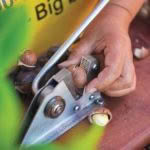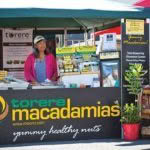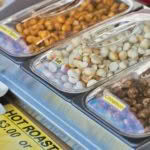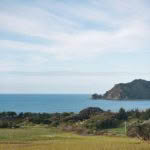Established nut growers’ advice on how to make a cracking profit in the macadamia business
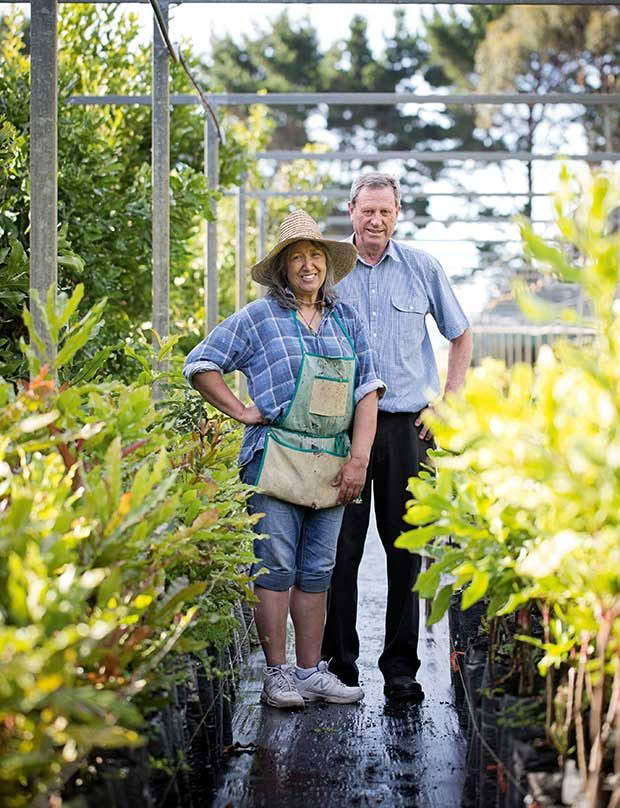
Vanessa Hayes and Rob Husband of Torere Macadamias.
One woman is making a strong stand for the macadamia nut in her community, and it’s a crackingly good option for a block-sized business.
Words: Anna Tait-Jamieson Images: Tessa Chrisp
Who: Vanessa Hayes
What: Torere Macadamias
Where: Opotiki, 130km south-east of Tauranga
Website
When Whittakers announced it was no longer making its popular macadamia chocolate, the news was received with dismay and surprise. Who knew macadamias had out-priced themselves on the world market? Newspaper reporters were put on the case and discovered that storms in Australia (the world’s biggest producer) had decimated crops, hitting worldwide supply at a time when demand for the nut is growing fast.
None of this came as a surprise to veteran East Coast grower Vanessa Hayes. The orchardist and co-owner (with her partner Rod Husband) of the largest macadamia nurseries in the country says the current shortage is not a market blip.
“We’ve always known there’s been a shortage, which is why it’s so frustrating for us that more people don’t grow macadamias commercially – there’s a huge demand.”
According to the most recent statistics, New Zealand imported 174 tonnes of macadamia kernels in 2014, more than three times the local production of 47 tonnes. That’s one reason why retail prices have reached nearly $70 a kilo for bulk-bin whole kernels. Only pine nuts beat macadamias on price.
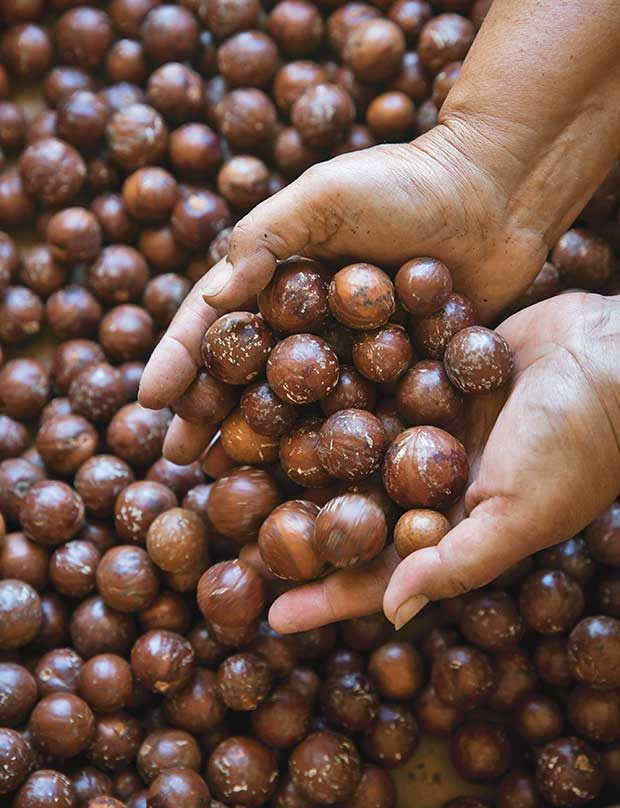
Preparing nuts for cracking.
But very few nuts can match them on health: macadamias contain the highest proportion of mono-unsaturated fats of any known nut, and an impressive amount of trace minerals including magnesium, calcium, iron and zinc.
They taste good too, with a crisp texture and buttery sweet flavour that lends itself to a wide range of value-added products. Vanessa and Rod’s own Torere Macadamias range includes spiced and honey-roasted nuts, nut butters, dukkah, pesto and chocolate-coated nuts. Other growers are pressing oil, infusing liqueurs and blending nut milks, adding to a slew of products that fit the requirements for paleo, gluten-free, raw, vegan and dairy-free diets, all trends that show no signs of abating.
Yet back in the early 1990s, when Vanessa first discovered macadamias, no-one knew much about the Australian nut. New Zealand’s first seedling orchard was planted in Kerikeri in 1932 but variety trials weren’t planted until the 1970s. Vanessa’s own journey began when she was researching crop options for a block of land she owns on the coast at Torere, near Opotiki. Through family she had some involvement with kiwifruit, avocado and maize but none of these crops fitted her criteria for this piece of land.
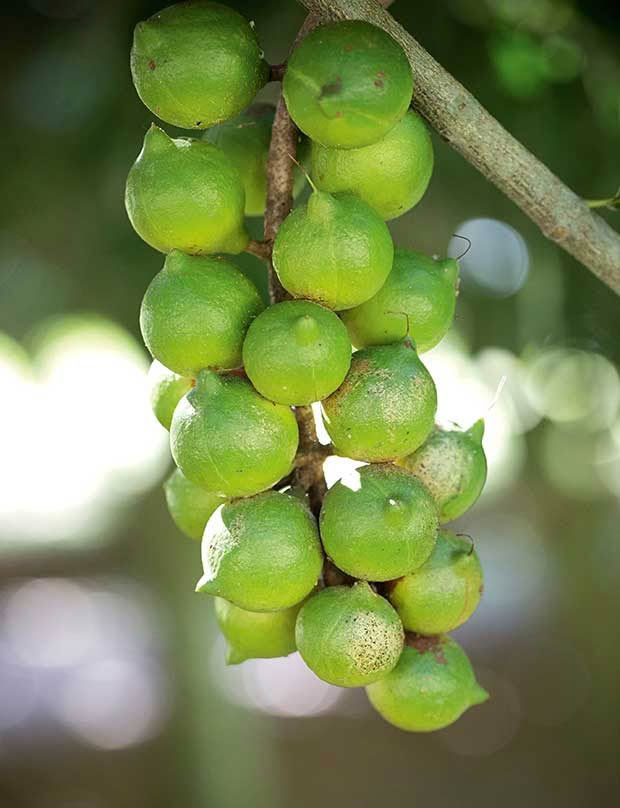
New ‘dropper’ varieties mean nuts fall to the ground rather than needing to be picked.
It was pristine and she intended to keep it that way with a high-value, spray-free crop that could be sustainably grown without chemicals. However, because she was – and still is – running her own insurance business in Gisborne, the crop also needed to be easy-care. Macadamias fitted the bill perfectly, specifically the new varieties that were being trialled in the area at the time. Unlike the original varieties that were dense, prickly and required hand-picking, the new ‘dropper’ types are selected for their more easily-maintained, open canopies and nuts that naturally fall to the ground when ripe, making them easier and much cheaper to harvest.
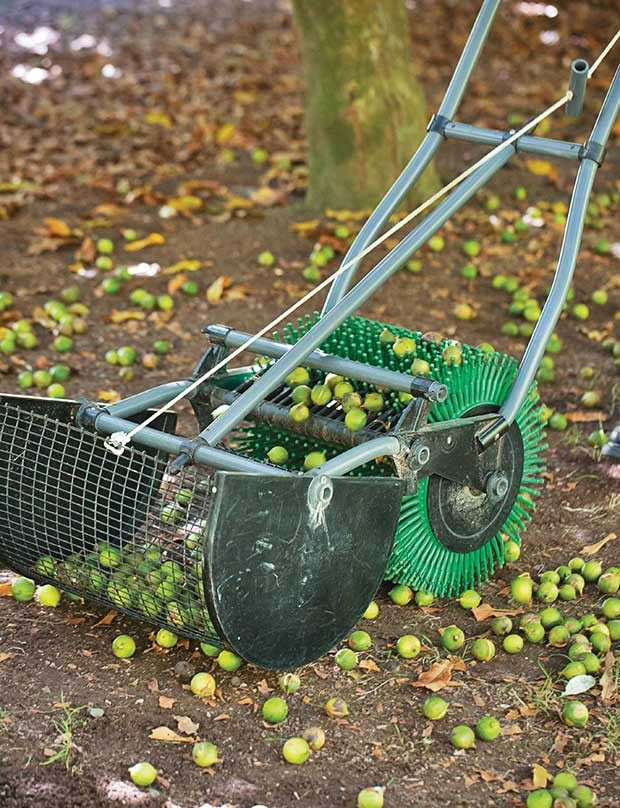
A specialist nut harvester helps make harvesting faster and easier on the back.
Several growers established orchards with these game-changing hybrids in the early 1990s but Vanessa took things a step further by continuing her own trials at a nursery facility alongside her orchard. This subsequent work, importing and testing new plant material, ultimately secured Torere Macadamias the sole propagation rights (in New Zealand) for the improved dropper varieties.
Her grand plan was to propagate the best trees in the country, not just for her own orchard business – she and Rod have 1500 trees currently producing seven tonnes of nuts (weight in shell) – but also for her fellow Maori landowners, who mostly grew maize.

“It was something I felt very strongly about because I was one of those landowners receiving barely enough return from maize to cover the rates. I wanted to work with them to gradually start replacing the maize with a long-term sustainable crop that provided employment and better returns.”
However, of the 25,000 trees she’s sold to date, very few have been planted by local landowners. Most have gone to new immigrants and business-savvy growers in Taranaki, south Auckland, Coromandel and the far North. The collective ownership of Maori land has been a barrier to investment and, like other landowners, Maori are well aware of orchards that failed and now lie abandoned to rats. Vanessa says the cost of picking the older varieties and the low kernel recovery made some orchards uneconomic. Others say they were poorly located.

Australian growers who swap notes and nuts at conferences comment on the high quality and intense flavour of New Zealand grown nuts. They surmise it may have something to do with our younger soils.
Wyn Daniell says macadamias require more work than people think. He and his wife Chris planted macadamias on their Katikati property in the early 1990s as a means of diversifying their avocado and kiwifruit business. He says their orchard, Harbourside Macadamias, is one of the highest yielding in the country with nearly 1000 trees, all early hybrid droppers.
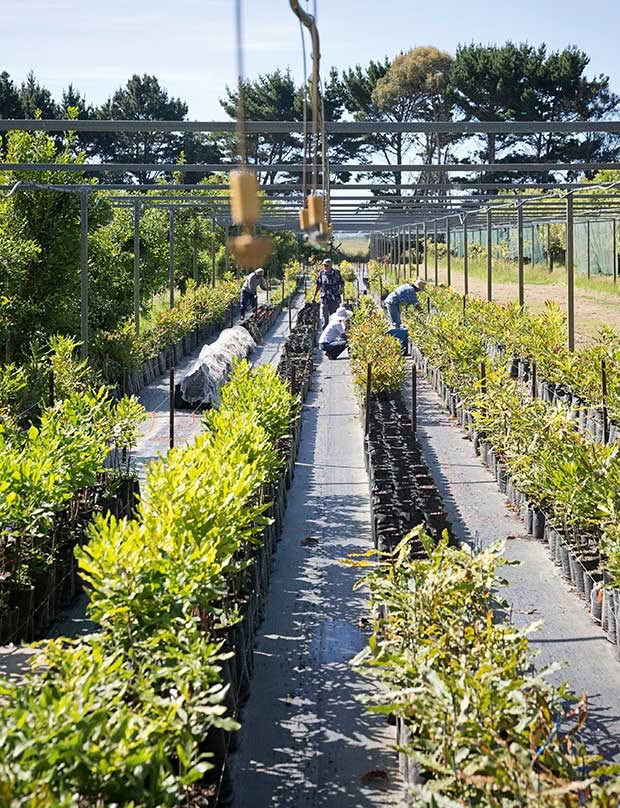
The nursery holds around 15,000 trees.
He agrees that the type of tree is important, but says it’s just one of many factors to consider. “You have to have everything going for you: sun, protection from wind, no frosts and no drought.” And when it comes to yield per tree, “performance is location specific.” He’s lucky to have rich soil and a good climate in Katikati, but he says it still took 15 years to achieve the scale that has made it worthwhile, and he reckons there’s no way he could grow macadamias without sprays.
Other growers do manage. Vanessa’s own orchard is organic, largely because her new generation droppers are more pest-resistant. That’s one reason Papakura growers Sue and Phillip Bearsley are gradually replacing their older plantings with Torere trees. Sue says Vanessa’s varieties also crop earlier, yield better, are more wind-resistant and have a good shape that will require less pruning. She also likes the medium-sized nuts.
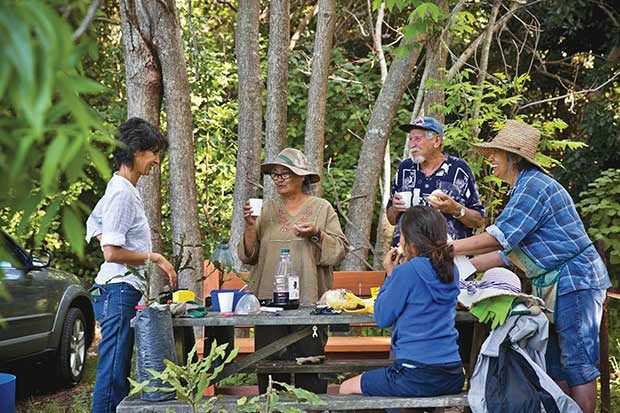
Friends and whanau share the work; planting out seeds for a new crop.
“If they’re too big they can get smashed [in the processor] so we get a higher proportion of whole nuts.” The wholesale price for whole kernel is currently around $35 a kilo compared to about $4.50 for nut-in-shell (NIS) so it certainly pays to process the crop. At Vanessa and Rod’s Torere orchard, the nuts are collected on the prongs of hand-operated harvesters that regularly sweep the orchard during nut drop, from June through to November.
The nuts are then trucked to a small processing workshop in Gisborne where Rod hands out ear muffs before switching on the machine that rips off the husks. It’s a fast and furious operation. Husks fly off in one direction while the smooth brown-shelled nuts rattle down the conveyor like a spilt bag of oversized Maltesers.

The nuts are slowly fan-dried in large bins for about a month until the kernels shrink away from the shells, at which stage they are ready for cracking. This is done offsite by a specialist processor with machinery that can break through the notoriously hard-shelled nuts. It takes 300psi of pressure to crack open a macadamia, equivalent to the jaw-shattering bite of a Rottweiler dog.
Half of the Torere Macadamia crop is sold as whole kernels to wholesale buyers, while the rest is processed into the value-added products that are sold at the Gisborne farmers’ market, organic stores and online. Nut sales have been a mainstay of the business, particularly during the recession when the nursery side of the operation all but collapsed. It was a grim time. Rod says people stopped planting, orders were cancelled and the nursery filled up with trees that no-one wanted to buy. “We lost 10,000 trees. We had to dump them because they got too big for the bags. We lost a fortune in trees, time and money.”
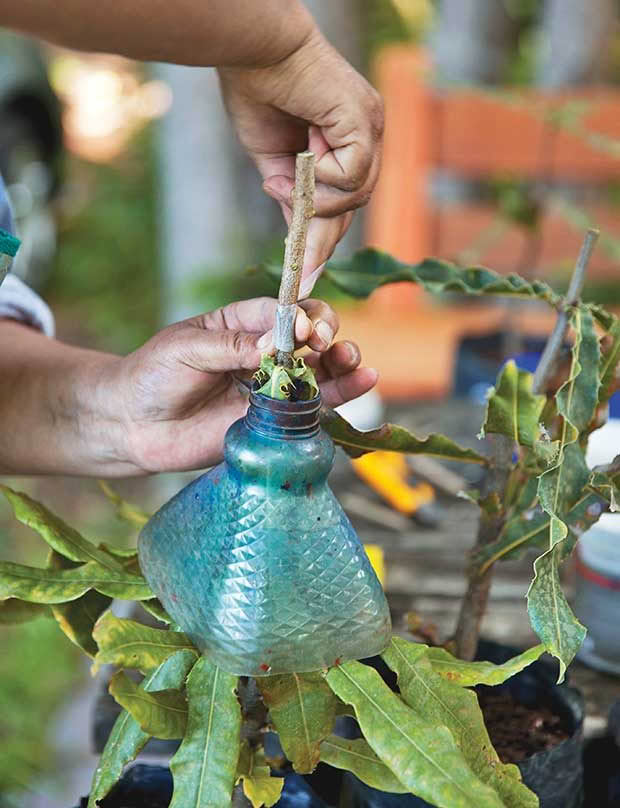
To make matters worse, in 2011 Vanessa was diagnosed with breast cancer. Rod shakes his head when he speaks of her strength in adversity and her continuing passion for the macadamia project throughout months of treatment. She says she was determined the orchard and nursery would survive if she didn’t. When she recovered, she put together a plan to future-proof the business. Her whanau, who stepped up and took over in the difficult times, are now actively involved in all aspects, from nursery and orchard to tree and nut sales.
Vanessa continues to run her insurance business in Gisborne while making regular trips to Torere to graft rootstock at the nursery that now holds 15,000 trees. It is being speedily re-stocked with the help of local horticulture students in anticipation of some big orders.
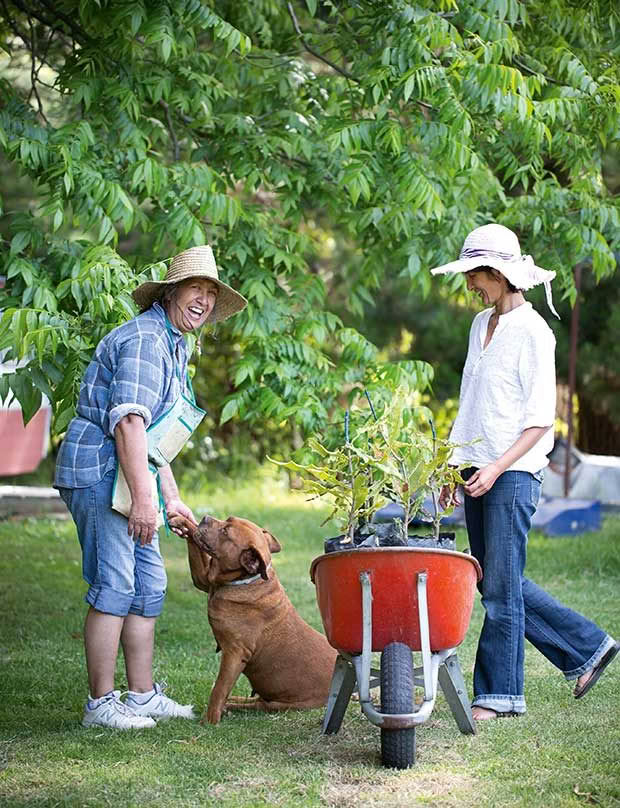
“We are on the cusp of achieving what we want to do: establishing a grower co-operative based on a local nut industry for Maori landowners on the East Coast.”
The local interest that has been so elusive is now gaining traction. She says the landowners see her selling her nut products at the Gisborne famers’ market and they want a bit of the action. She thinks a recent order of 2000 trees from a Maori farming station outside Gisborne will lead to more plantings by related parties. It has certainly stoked the interest of the regional economic development agency which has come up with some preliminary funding. Ultimately, she hopes they’ll support a large processing plant in Gisborne to service the growers and create employment in an area that sorely needs it.
- Selling the crop at the Gisborne markets.
- Value-added nuts from the Torere range.
- The nursery sits seaside at Torere, south of Opotiki.
In the meantime Vanessa is in business mode, preparing presentations for investors, liasing with government agencies, and holding field days for potential growers at Torere. Interest has been huge and you can feel her excitement. “I’m actually a bit nervous,” she admits. “I’ve been flooded with enquiries from people. I have a list that’s growing every day.”
Grower Profile: Sue and Phillip Bearsley
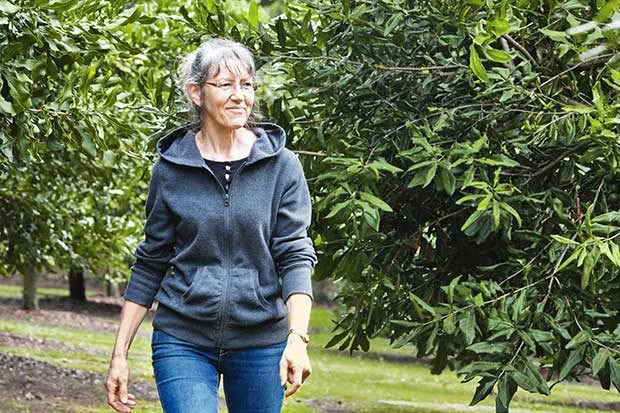
Where: Papakura, 45km south of Auckland
What: Macadamia Online
Land: 4ha (10 acres)
Website
The Bearsleys grow macadamias on a property with acidic, orange-clay soil that is high in iron. The climate is warm with good rain and “just a little bit of frost,” says Sue.
Their first 150 trees (12 dropper cultivars) are now 12 years old.
More recently they have planted 220 trees (three dropper cultivars) from Vanessa’s Torere nursery. The couple have found these trees grow best so they plan to replace the older trees by top grafting and slowly increase total plantings to 750 trees, a number they say makes a macadamia orchard commercially viable.
The Bearsleys orchard is spray-free. The trees are well mulched and the ground is kept clear of any old nuts. Geese mow the grass down and also help take care of stray bugs. In spring and summer the couple lay rat bait. If any young trees are slow to produce flowers Sue says she gives them a boot at the base of the trunk. “It helps them spring into life.”
If a tree looks like it’s starved of nutrients, Sue plants broad beans around the base.
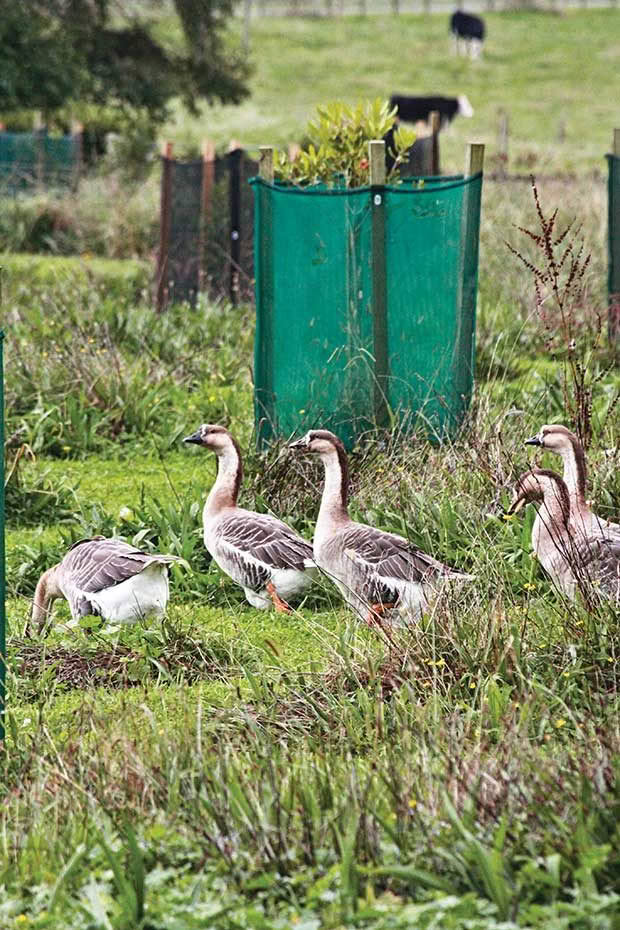
Sue and Phillip run a small flock of Chinese geese through their orchard to keep the pasture and weeds under control, with no herbicides necessary.
And if a tree looks like it’s starved of nutrients, she plants broad beans at the base. “It encourages the good fungi that the roots need to help with nutrient uptake.”
Sue says developing an orchard, buying trees and looking after them while waiting for a crop requires a high level of investment but she recommends macadamias as a good choice for people “who like gardening, care about trees and how they grow, and care about what they eat.”
4 THINGS YOU MIGHT NOT KNOW ABOUT MACADAMIA
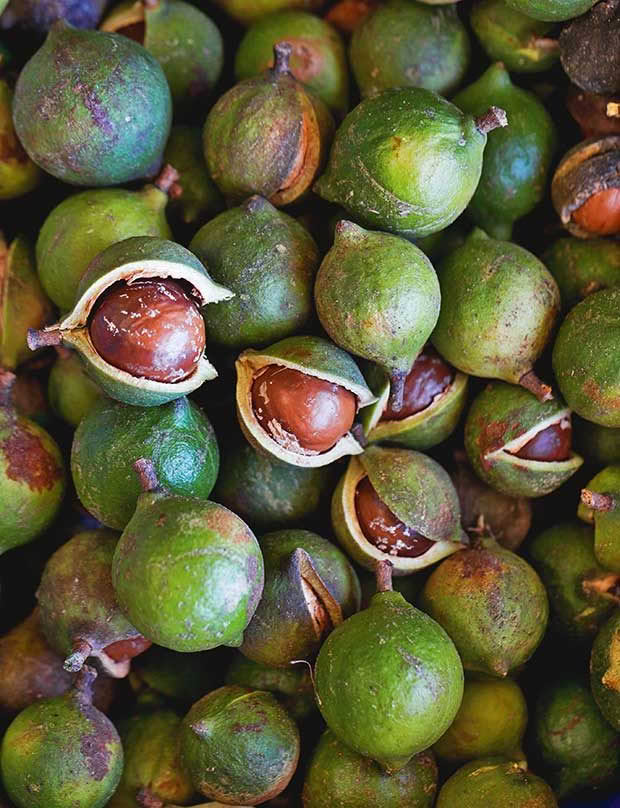
1. It’s native to Australia, and the genus macadamia is a member of the Proteaceae family, making it related to the New Zealand native rewarewa (which looks remarkably similar).
2. Australia is the world’s leading producer with 45,000 tonnes of nuts (in shell) harvested in 2015.
Source: Australian Macadamia Society
3. In New Zealand the trees are mostly grown in frost free areas north of the Taranaki – Hawkes Bay line but there are commercial orchards in Nelson and cooler varieties will grow as far south as Banks Peninsula. Waikato is the leading producer.
4. Top orchards are yielding 4-6 tonnes per hectare (2.5 acres)
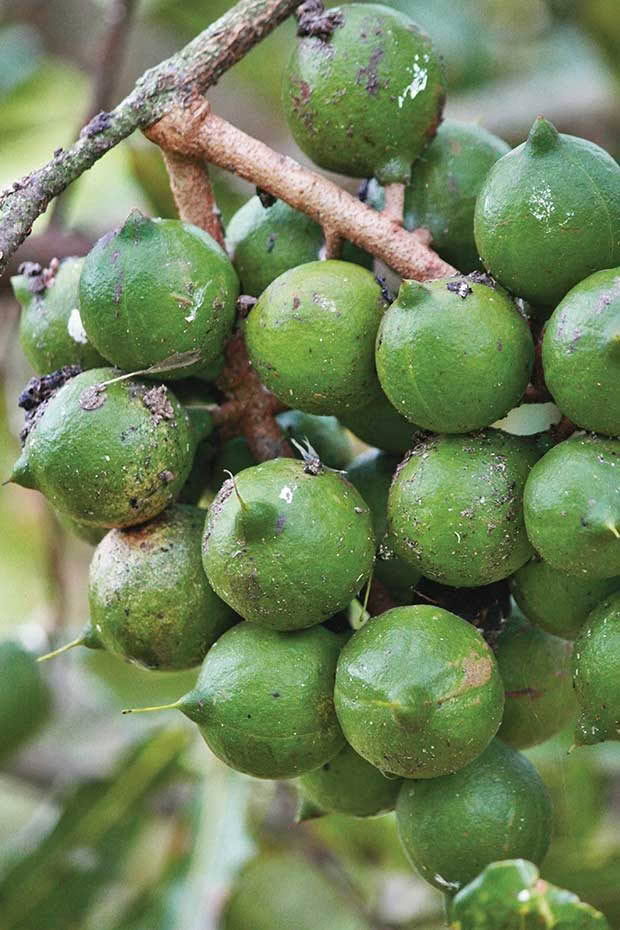
PICKERS VERSUS DROPPERS
Pickers or ‘stick tights’ can be a good choice for gardeners or those thinking of growing just a few trees because they can be harvested by hand in one sweep, meaning growers don’t need to be on site to pick up the nuts when they fall.
For larger plantings and commercial orchards, droppers have the big advantage of being easier and cheaper to harvest from the ground, with the proviso that the nuts must be picked up regularly and the grass must be kept short in the orchard.
Various dropper cultivars are available with different qualities. Growers are encouraged to choose three or four different types for an extended harvest season. Vanessa says Torere’s nine cultivars are a big improvement on the earlier varieties, producing nuts in three years and yielding 10-15kg per tree at 10 years. They crop regularly (some types are biennial) and are also bred to be more resistant to the green vegetable bug, meaning the crop is spray-free.
Dropper varieties have white blossoms that act like a beacon at dusk attracting the leaf roller moth, an important pollinator. Bees do most of the work and, an added bonus, produce lovely macadamia honey.
MACADAMIA MATHEMATICS
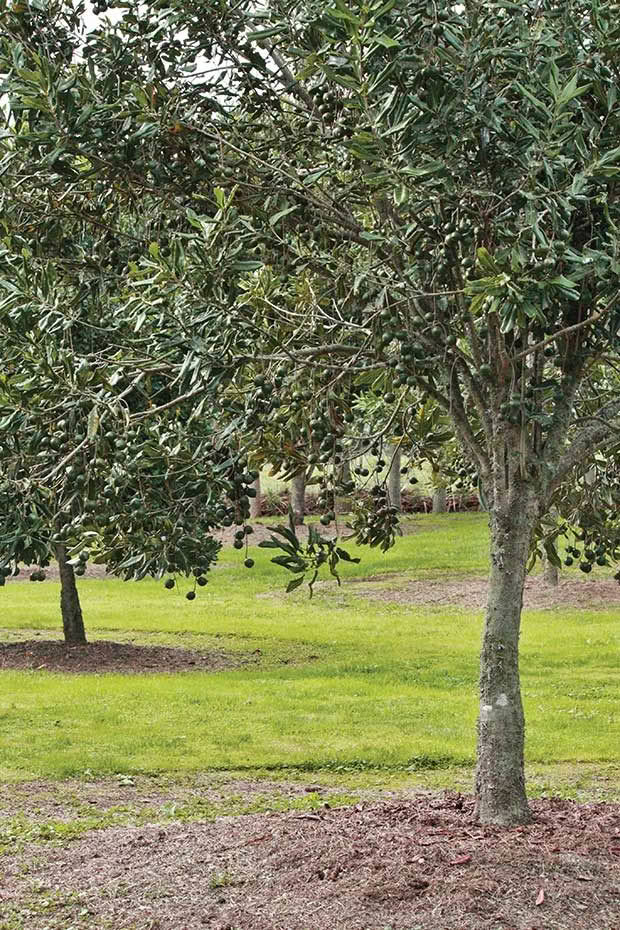
• Trees from Vanessa’s Torere nursery cost $30-$40 each and can be planted 500 to 1ha.
• They will produce 1-2kg of nuts in shell three years after planting, increasing to 10-15kg after 10 years, and 17-20kg at maturity.
• Capital costs include the provision of shelter from wind, and possibly irrigation. Young trees, especially, will need protection from frost.
• De-husked, nut in shell (NIS) value is $4.50kg.
• Processing costs about $15kg – the kernel is about 33% of NIS.
• Kernel value wholesale is $35kg, but added value products sell for significantly more per kilogram.
• Prices follow global fluctuations. For instance, demand is growing in Asia but supply will increase as recent plantings in China, Brazil, Kenya and Australia come on stream.
*costings supplied by Torere Macadamias
PESTS
Compared to Australia, New Zealand orchards are relatively pest-free. Rod Husband of Torere says Australian growers contend with 32 pests including snakes, whereas NZ has only three.
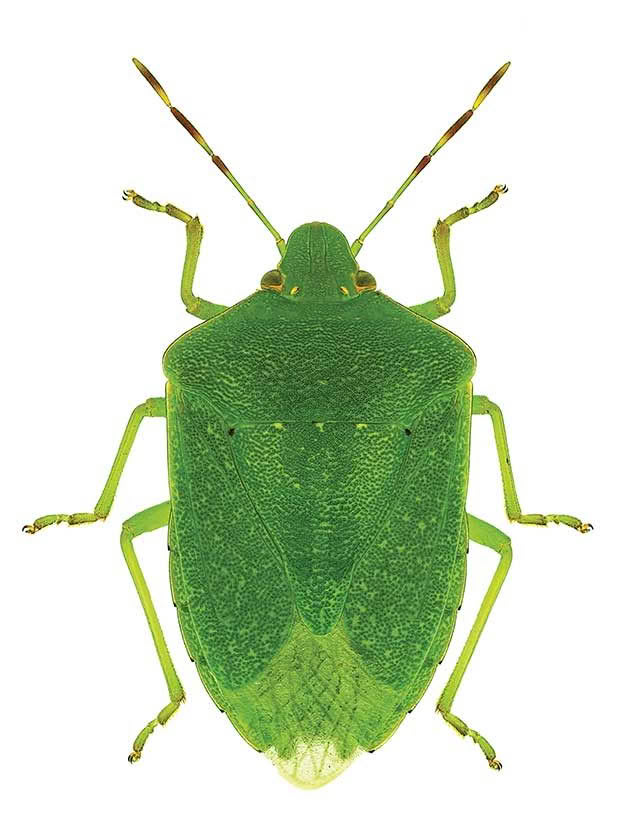
Green vegetable bug
Can pierce a young nut leaving a blemish that won’t be visible until the nut is cracked open, and it also affects the flavour, leaving the nut unsaleable.
Rats
A well-known pest, with teeth sharp enough to break through the shell, can be kept at bay by setting traps or laying bait, and regularly mowing the orchard.
Guava moth
A problem for some Northland orchards.
HOW TO MAKE MACADAMIA MILK
The Daniells in Katikati sell a wide range of macadamia products including a delicious liqueur that’s sold under their brand The Orchardist. They also sell bags of shaved macadamias at the Tauranga farmers’ market to people who make their own nut milk. Wyn drinks it regularly himself.
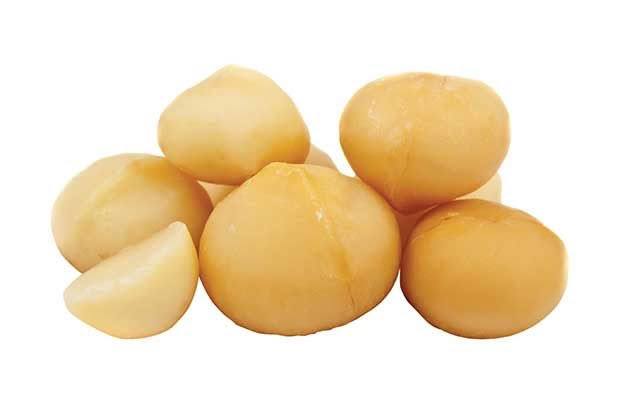
INGREDIENTS
1 cup crushed nuts
3 cups of water
How to make
Soak crushed nuts in water overnight. Place nuts and water in a blender and process
on high speed. A sweetener such as honey or pitted dates can be added. Strain if desired.
Source
Resources:
NZ Tree Crops Association
NZ Macadamia Society
Love this story? Subscribe now!
 This article first appeared in NZ Lifestyle Block Magazine.
This article first appeared in NZ Lifestyle Block Magazine.
